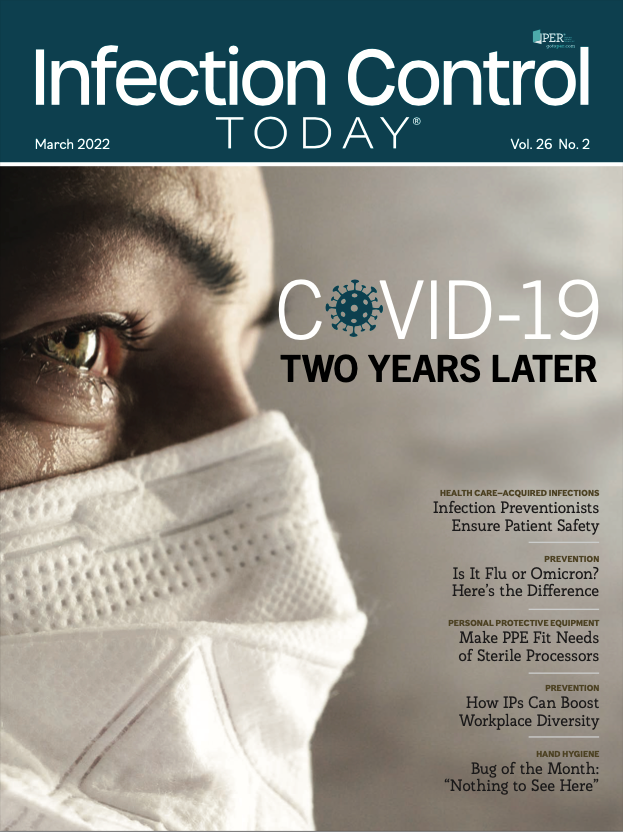Mask Fit Testing Experiment Uncovers Different Levels of Protection
Earloop toggles or a mask brace made for a better seal and enhanced the fit of medical masks. The mask brace “significantly improved” how cloth masks fit.
The sudden appearance of the Omicron variant of COVID-19 shifted the discussion over how best to ward off infection—a discussion which had evolved over the course of the pandemic to mostly focusing on vaccines and boosters. But as Tedros Adhanom Ghebreyesus, the general director of the World Health Organization, put it during a COVID-19 update on December 14: “It’s not vaccines instead of masks. It’s not vaccines instead of distancing. It’s not vaccines instead of ventilation or hand hygiene. Do it all. Do it consistently. Do it well.”
Ah: “Do it well.” Just what does that mean when it comes to masking for the public, patients, and health care professionals? Investigators with the National Institute for Occupational Safety and Health (NIOSH), a division of the Centers for Disease Control and Prevention, say that it means having a mask that fits just right.
“Layering a 3-ply cloth mask over a medical mask (double masking) or securing a medical mask with an elastic brace provided the best source control performance,” they write in a preprint study in the American Journal of Infection Control (AJIC). (Source control means reducing the expulsion of air particles.) The study continues that “these mask fit modifications can be implemented by health care workers, patients, and the general public alike.”
The types of masks tested were:
- 3-ply medical face masks with elastic earloops and adjustable metal nose strip
- 3-ply medical face masks with elastic earloops and adjustable metal nose strip
- 2-ply polyester blend face masks with earlooops
- 3-ply 100% cotton face masks with earloops and adjustable metal nose strip
- 4-ply cotton-polyester blend face masks with earloops and adjustable metal nose strip
The fit mollifications were:
- Crossing the earloops to create a loop that fits over the ear
- Reusable plastic mask bracket worn under a face mask
- Reusable plastic adjustable strap worn behind the head to adjust earloops
- Knotting the earloops near the mask panel with excess material tucked under the knot
- 3-ply 100% cotton cloth mask worn over a medical face mask
- Reusable elastic brace worn over a mask
Investigators measured the effectiveness of various fit modifications on people and simulator manikins that “coughed” and “exhaled” from January 2021 through April 2021.The study states that “medical and cloth face masks were secured to a test plate using beeswax. Pleats on the unmodified medical face masks were expanded prior to measurement. Filtration efficiency and airflow resistance were measured on the double-mask modification by securing the edges of a 3-ply cloth mask over the edges of a medical face mask with beeswax.”
Four people also participated in the study.
The NIOSH investigators wrote that they wanted to conduct the experiment after some media outlets made suggestions about how to improve the fit and performance of masks. “Although fit testing is an OSHA requirement used for assessing seal leakages on tight fitting respiratory protective devices such as N95 respirators and filtering facepiece respirators, fit tests of medical masks show that crossing the earloops or using a mask bracket generally diminishes the fit factor on both the simulator manikin as well as on human subjects,” the study states.
However, earloop toggles or a mask brace made for a better seal and enhanced the fit of medical masks. The mask brace “significantly improved” how cloth masks fit on human subjects.
“Collectively, greater fit factors were observed with the pliable headform used in our respiratory simulation studies compared to human subjects,” the study states. “These noted differences are consistent with previous studies by our group and likely relate to the fit test protocol and facial variations that alter how well a mask seals to the face. When measuring mask fit factor, human test subjects performed the series of test exercises outlined by the CNC fit test protocol whereas the manikin simulators used in this study are static and also breathed at a constant rate.”

Newsletter
Stay prepared and protected with Infection Control Today's newsletter, delivering essential updates, best practices, and expert insights for infection preventionists.
The Clean Bite: Real Talk About Infection Control — From the Classroom to the Operatory
August 4th 2025Want dental assistants who don’t just know infection control, but live it from day one? Tune in to The Clean Bite and learn how powerhouse instructor Samantha Mangioni is shaping the next generation to protect every patient, every time.
Sharps Safety Starts with Us: Why Infection Preventionists Must Lead the Charge
August 4th 2025Sharps injuries remain a silent but serious threat in health care that infection preventionists are uniquely equipped to confront. With underreporting widespread and safety devices underused, it’s time for IPs to step into a leadership role, using their expertise in systems thinking, education, and policy to build a culture where staff protection is as prioritized as patient care.
Rethinking Clean: How Outdated Disinfection Practices Are Fueling the AMR Crisis
August 4th 2025As drug-resistant infections rise, infection preventionists must look beyond outdated disinfectants. HOCl offers a safer, sustainable solution that has been proven effective, residue-free, and ready for health care use today.
Is the US Quietly Ending COVID-19 Vaccination for the Young and Healthy
August 4th 2025As the FDA limits COVID-19 vaccine approvals to high-risk groups, healthy adults and pregnant individuals are being left behind. Learn how these changes could impact insurance coverage, long COVID prevention, and public health strategies.